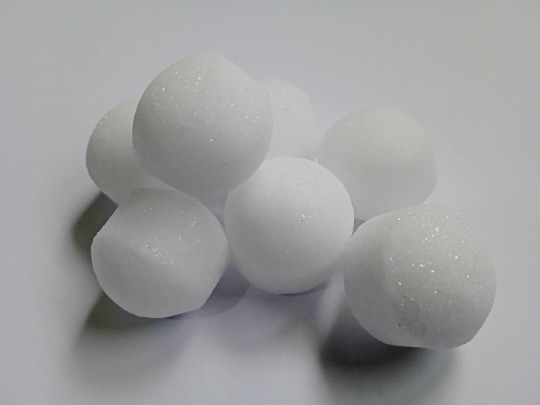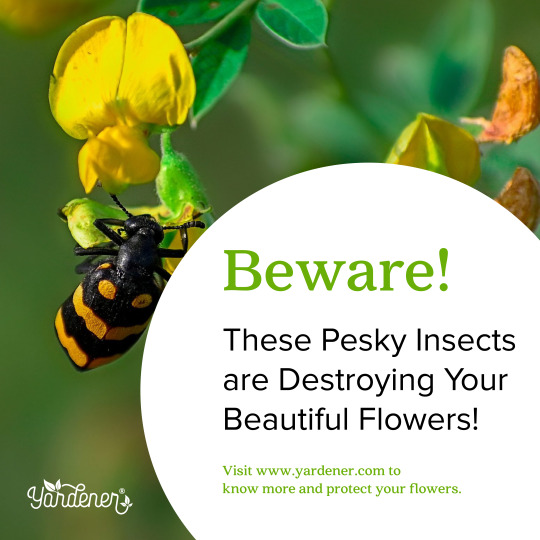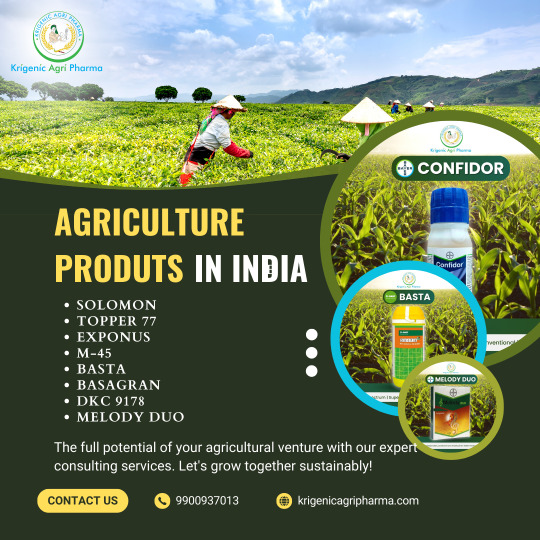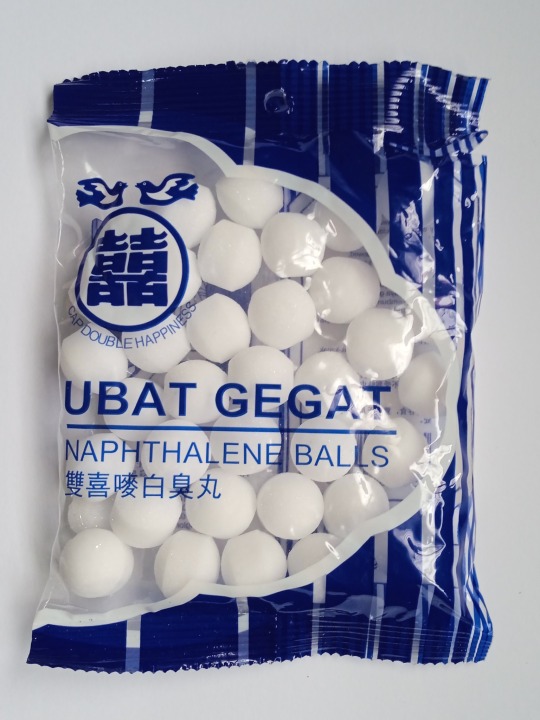#insecticides
Text
A historic legal agreement approved in federal district court yesterday afternoon commits the Environmental Protection Agency to a suite of proposed reforms to better protect endangered species from pesticides. The settlement, which covers more than 300 pesticide active ingredients, marks the culmination of the largest Endangered Species Act case ever filed against the EPA.
Under the agreement’s terms, the EPA will develop strategies to reduce the harm to endangered species from broad groups of pesticides, including herbicides and insecticides, while taking further steps to target meaningful, on-the-ground protections to endangered species most vulnerable to harm from pesticides.
Thanks @walking-on-a-scream for the submission!
#submission#endangered species#good news#hope#pesticides#herbicides#insecticides#environment#endangered species act#legal
487 notes
·
View notes
Text
The student-led startup from Nigeria recycles plastic sachets into paint, and adds an organic insect repellent to fight malaria.
#nigeria#africa#plastic pollution#maleria#insecticides#pesticides#insect repellent#good news#environmentalism#science#environment#nature#plastic recycling#recycling#upcycle#upcycling
85 notes
·
View notes
Text
A new study has identified novel insecticidal proteins in ferns. Professor Marilyn Anderson at La Trobe University said the discovery could lead to plant-made protein pest control for crop plants that are essential to global food production.
"The structural analysis demonstrates that even though this protein is produced by plants, it has several features in common with known three-domain Cry proteins used extensively in agriculture for insect control," Professor Anderson said.
"These proteins protect crops from damage by serious lepidopteran (caterpillar) pests."
The discovery of these proteins by Corteva Agriscience holds promise for the development of new tools to combat insect pests that threaten food and fiber production.
Continue Reading.
75 notes
·
View notes
Text

Mothball
#mothball#mothballs#insecticide#wikipedia#wikipedia pictures#naphthalene#pesticides#pesticide#insecticides
20 notes
·
View notes
Link
Carbofuron 3% CG – Greenwood Pesticides
Brand Name – Hamala
In the realm of agriculture, safeguarding crops from voracious insects is a paramount concern for farmers worldwide. In this pursuit, various pesticides and insecticides have been developed to combat the threat of crop damage. One such effective solution is Carbofuran 3% CG, a powerful insecticide that plays a vital role in protecting agricultural yields. In this blog post, we will delve into what Carbofuran 3% CG is, how it works, its benefits, and considerations for its responsible use.
What is Carbofuran 3% CG?
Carbofuran 3% CG is a chemical compound belonging to the carbamate family. It is primarily used as an insecticide and nematicide, making it a valuable tool for pest management in agriculture. The “3% CG” designation refers to its formulation as a granular product with 3% active ingredient concentration.
How Does Carbofuran 3% CG Work?
Carbofuran 3% CG disrupts the nervous system of insects, ultimately leading to their paralysis and death. When applied to the soil or directly onto crops, it is absorbed by plant roots and translocated throughout the plant. This systemic action makes it highly effective in protecting crops from a wide range of insect pests. It interferes with the acetylcholinesterase enzyme in insects, disrupting the normal transmission of nerve impulses and causing paralysis.
Benefits of Using Carbofuran 3% CG:
Broad Spectrum Pest Control: Carbofuran 3% CG is known for its effectiveness against a wide variety of soil-dwelling and foliar pests, including nematodes, aphids, thrips, and whiteflies. This versatility makes it a valuable asset for integrated pest management (IPM) programs.
Immediate Action: The quick mode of action of Carbofuran 3% CG means that pests are rapidly incapacitated, reducing the potential for crop damage.
Increased Crop Yields: By protecting crops from insect damage, this insecticide helps farmers achieve higher yields and improve the overall quality of their produce.
Reduced Environmental Impact: While effective against pests, Carbofuran 3% CG degrades relatively quickly in the environment, reducing the risk of long-term soil or water contamination when used responsibly.
Considerations for Responsible Use:
Follow Label Instructions: Always read and follow the manufacturer’s instructions and guidelines for application, dosage, and safety precautions.
Protective Gear: When handling Carbofuran 3% CG, wear appropriate personal protective equipment (PPE) to minimize exposure.
Application Timing: Apply the insecticide at the recommended timing for maximum effectiveness while minimizing potential harm to non-target organisms.
Resistance Management: To prevent the development of insecticide resistance, rotate Carbofuran 3% CG with other pest control methods in your IPM strategy.
Environmental Impact: Be mindful of potential environmental impacts, such as runoff into water bodies, and follow best practices for responsible pesticide use.
Conclusion:
Carbofuran 3% CG is a powerful tool in the fight against crop-damaging insects. Its quick action, broad-spectrum efficacy, and potential for increased crop yields make it a valuable asset for farmers. However, it is crucial to use this insecticide responsibly, following label instructions and considering its environmental impact. When used as part of an integrated pest management approach, Carbofuran 3% CG can contribute to sustainable and productive agriculture.
Croto is a broad spectrum organophosphate systemic Insecticide cum acaricide with contact & stomach action.
Crop: Cotton, Sugarcane, Paddy, Mustard
Pest: Sucking, Chewing, Biting insects, BPH, GLH, Shootfly, Pod Borer etc.
Doses: 625ml – 1.5 Liter per ha*
*These doses are only indicative. Exact Dose & Dilution may vary according to the crop, crop stage, Pest Infestation & local recommendations.
Carbofuron 3G is a systemic insecticide used for the control of Maize, Sugarcane, and Rice stem borers. It kills the pest by its contact & stomach mode of actions.
“Empowering Agriculture with Innovative Solutions – Greenwood Pesticides“
#greenwood#greenwoodpesticides#pesticides#insecticides#herbicides#fungicides#insects#agriculture#farming#farmers#soil#crop#farm#spray#vegan#fertilizer#agribusiness#agri#haryana#india#farminglife#soilhealth#pestcontrol#chemical#pesticidesfree#nature#bugs#gardening#food#healthyfood
2 notes
·
View notes
Text

Our team will be present at the Asian Chemical Forum (ACF) - 5-6 September 2023. If you will be at the conference, do connect with us.
We look forward to the opportunity to understand your requirements and help you in building a safer chemical future!
Email us at 📧 [email protected] to schedule a meeting.
Eurofins Advinus Agrosciences India offers comprehensive product development services to support your global registration needs. Our team has expertise to assess and prove the safety of your products as per requirements of all international guidelines (OECD, EPA, CIPAC, JMAFF, ICH, SANCO, ABNT etc.)
To know more about our services, click on the link - 👉
Agrochemical Development Services
#asianchemicalforum#chemicalindustry#regulations#productdevelopment#pesticides#insecticides#specialitychemicals#cropprotection#EurofinsAdvinus
2 notes
·
View notes
Text
Fear of Neonicotinoids... What's Safe? (chemistry-5)

A lot of bees are dying all over the world these days.
The reason for this is the article, after an introduction that it is possible that it is likely to be compounded, and that the new pesticide neonicotinoids (insecticides) have made a large contribution.
If honeybees die out, most of the plants that used honeybees as messengers for pollination, 80% of all plants, would be wiped out. This situation is feared to be more dangerous than the production of honey itself. No vegetables on the table! !
So, I read "Devil's New Pesticide 'Neonicotinoid'" (Shunsuke Funase: Sangokan).
However, in April 2006, the Supreme Court of France determined that neonicotinoids were "black" and banned their use. Beekeepers who suffered from CCD and an enthusiastic judge gathered information and pushed the ban.
The German company Bayer developed neonicotinoids, which have low acute toxicity to humans and act on the central nervous system of harmful insects. It was touched.
However, the impact also extended to bees, which are beneficial insects.
For example, in the case of imidacloprid (a type of neonicotinoid), the seeds are coated at the time of sowing, and all insects that attack the growing plants are harmed. In addition, once airborne, neonicotinoids spread within a 4km circle, whereas conventional pesticides were limited to within a 100m circle. If honey contains this dangerous pesticide, we humans, whose central nervous system is similar to that of honeybees, may also be neurotoxic. Neonicotinoids are tasteless and odorless, and some bees can't tell them apart. If it's an organic phosphorus pesticide, it seems that bees avoid it because it feels uncomfortable.
Note: This article is a little old. Neonicotinoids are banned in Europe and the United States, but Japan is promoting their use...
#Neonicotinoids#bee#insecticides#CCD#neurotoxic#Babylman#the Supreme Court of France determined that neonicotinoids were “black” and banned their use.#chemistry
3 notes
·
View notes
Text
Beware: These Pesky Insects are Destroying Your Beautiful Flowers!
The last thing we need to see in our garden or on a plant in the landscape is some wilting leaves, or some holes eaten out of the leaves, or even worse, some critter sitting right in the middle of my flower. Now that's outrageous!!
Visit the Pest Insects On Flowers section at www.yardener.com and protect your flower.
Happy hunting!

#flowerpests#gardeningtips#pestcontrol#savetheflowers#organicgardening#naturalpestcontrol#flowergarden#insecticides#pestmanagement#greenliving
2 notes
·
View notes
Text
#agriculture#product#seeds#pesticides#insecticides#agriculturetools#fruits#vegetables#healthylife#healthyfamily#healthysociety#organic
6 notes
·
View notes
Link
Excerpt from this press release from the Center for Biological Diversity:
The National Marine Fisheries Service released a final biological opinion today establishing critical protections for salmon and Puget Sound orcas from exposure to three widely used insecticides — chlorpyrifos, diazinon and malathion.
Today’s analysis finalizes a March draft biological opinion that concluded the three insecticides put 37 protected species in jeopardy of extinction and harm their designated critical habitat.
“This is how pesticide consultations are supposed to work. The Fisheries Service followed the science and the law, and now salmon and orcas will receive long-overdue protections,” said Brett Hartl, government affairs director at the Center for Biological Diversity. “The agency should be commended for upholding scientific integrity despite industry pressure to water down restrictions on these pesticides.”
The draft opinion recommended a set of mandatory, on-the-ground conservation measures to protect salmon, sturgeon and steelhead from these pesticides, including spray buffers of up to almost 1,000 feet. Because the Environmental Protection Agency and pesticide manufactures have now agreed to implement the conservation measures required by the Fisheries Service, the agency was able to reach a final “no jeopardy” determination on the pesticides.
The final biological opinion requires dramatic reductions in the amount of the three pesticides that will reach streams and rivers inhabited by endangered species. Agricultural users must limit spraying anywhere from nearly 500 feet to nearly 1,000 feet from streams and leave a vegetative buffer strip that captures pesticide pollution before it enters the water.
Pesticides users can implement alternative measures such as participating in recognized watershed-stewardship programs if spraying must occur closer to streams and rivers. The EPA will also develop a rigorous monitoring system to track mosquito control operations, which will still be allowed to continue under much tighter oversight.
The Fisheries Service’s required measures are much more comprehensive and protective than those required by the U.S. Fish and Wildlife Service, which released a biological opinion just for malathion two months ago. In contrast to the buffers of hundreds of feet required by the Fisheries Service, the Fish and Wildlife Service only required buffers of just under 20 feet to protect bull trout. Bull trout are found in most of the same rivers and streams as Pacific Salmon and are actually more sensitive to pollution than most salmon species.
4 notes
·
View notes
Text
The Impact of Insecticides Beyond Target Pests

In the world of pest management, the belief that plant insecticide harms only their intended targets is pervasive. However, this misconception overlooks the broader ecological implications of insecticide use. Join us as we debunk this myth and explore the reality of insecticide impact beyond target pests.
Understanding the Myth
The myth that insecticides harm only target pests stems from a narrow view of pest management. Many believe that insecticides selectively eliminate pests without affecting other organisms. This misconception has significant implications for pesticide use and environmental stewardship, as it ignores the complex interactions within ecosystems.
The Reality of Insecticide Impact
In truth, insecticides can have far-reaching effects on non-target organisms. Beneficial insects, such as pollinators and natural enemies of pests, are often unintentionally harmed by insecticide applications. Moreover, insecticides can disrupt food webs and ecological balance, leading to unforeseen consequences for ecosystem health.
Factors Influencing Non-Target Effects
The extent of non-target effects depends on various factors, including the mode of action, formulation, and application method of insecticides. While some insecticides are more selective in their targeting, others have broader impacts on insect populations. Additionally, factors such as dosage, timing, and environmental conditions can influence the magnitude of non-target effects.
Mitigating Non-Target Effects
To minimize non-target effects, integrated pest management (IPM) approaches are essential. IPM emphasizes a holistic approach to pest management, incorporating multiple tactics such as cultural practices, biological controls, and habitat restoration. By reducing reliance on insecticides and promoting ecological balance, IPM offers a sustainable alternative to conventional pest control methods.
0 notes
Text
Revolutionizing Agriculture Products in India with Krigenic Agri Pharma

Elevate your farming practices with Krigenic Agri Pharma's diverse range of agriculture products in India. Our extensive lineup encompasses everything from herbicides, fungicides, and insecticides to fertilizers, field seeds, organic fertilizer, seed treatment solutions, water-soluble fertilizers, seeds, and garden care products. With a focus on quality and effectiveness, we offer top-notch solutions to address the varied needs of modern agriculture.
Krigenic Agri Pharma prides itself on offering products from renowned brands such as Toppers 77, Tynzer, Basagran, Basta, Stomp Xtra, and more. Whether you're tackling weed control, pest management, soil fertility enhancement, or crop protection, our products are designed to deliver reliable results while promoting sustainability.
Backed by extensive research and development, our agriculture products are formulated to meet the highest standards of performance and environmental responsibility. We understand the challenges faced by farmers and are committed to providing them with innovative solutions to enhance productivity and profitability.
Experience the difference with Krigenic Agri Pharma. Visit www.krigenicagripharma.com or contact us at 9900937013 to explore our comprehensive range of agriculture products and discover how we can support your agricultural success.
#Toppers77#Tynzer#Basagran#Basta#StompXtra#FieldSeeds#OrganicFertilizer#SeedTreatment#WaterSolubleFertilizers#GardenCare#KrigenicAgriPharma#PharmaceuticalAgriculture#TopTierSolutions#OptimalYields#crops#agricultureproducts#agripharma#agriculture#pharma#SustainableFarming#RevolutionizeFarming#ExcellenceInAgriculture#Herbicides#Fungicides#Insecticides#Fertilizer#FieldSeed#WaterSolubleFertilizer#Seeds#krigenicagri
0 notes
Text
#good news#science#environmentalism#nature#environment#animals#climate change#conservation#bugs#pesticides#insects#insecticides
37 notes
·
View notes
Text

Mothball
#mothball#mothballs#naphthalene#insecticide#pesticides#pesticide#insecticides#wikipedia#wikipedia pictures
18 notes
·
View notes
Text
After exhuming the bodies of Ernest Wilson and Oliver Leonard, the police found high levels of phosphorus. Mary Wilson was convicted of murdering two husbands with insecticides, and her previous two husbands were also thought to have been poisoned.

"Normal Women: 900 Years of Making History" - Philippa Gregory
#book quotes#normal women#philippa gregory#nonfiction#mary elizabeth wilson#merry widow of windy nook#john knowles#john russell#ernest wilson#oliver leonard#exhumed#police investigation#phosphorus#murder#insecticides#poisoned
0 notes
Text

We are geared up for CAC 2024! Our team is excited to meet with you at booth 81F214 from 13-15 March 2024 at the National Exhibition and Convention Center, Shanghai. If you would like to schedule a meeting, write to us at [email protected]
Eurofins Advinus Agrosciences India supports development of registration packages for global regulatory submissions (following USEPA, EEC, SINDAG, OECD and CIPAC guidelines) for insecticides, pesticides, herbicides, fungicides, industrial chemicals and specialty chemicals.
We ensure scientific comfort to clients during the study and post submission, through simplification of complex matters with sound scientific data and inputs. Data from our laboratories has been successfully submitted to global regulatory agencies. Our team of scientists are well experienced with state-of-the-art equipment and strict quality system.
To know more about our services, click here.
0 notes